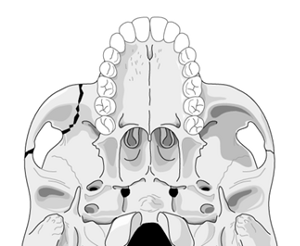Happy Thanksgiving!
Here’s a turkey trauma photo, or is it a baby trauma photo? This costume is featured on MarthStewart.com, believe it or not!
Happy Thanksgiving!
Here’s a turkey trauma photo, or is it a baby trauma photo? This costume is featured on MarthStewart.com, believe it or not!
Trauma Is The Leading Cause of Death …
We read this phrase all the time, in the newspapers and in many journal articles relating to trauma. Where do they get this? Well, it comes from mortality statistics compiled by the Center for Disease Control.
Trauma IS the leading cause of death in ages 1-44. In infants, congenital defects cause the most deaths and trauma is only #4. At age 45 and above, it begins to drop off, but stays in the top 5 until age 65 when it drops to #9. Overall, trauma is the #5 killer for all age groups combined.
This image shows the top 5 causes of death across all age groups. The blue boxes are unintentional trauma, the red boxes are homicide, and the green boxes are suicide.
One fact that tends to surprise people is that suicide is such a common cause of death. Suicides are not typically reported in the news, so most people are unaware unless it involves their family or friends.
Clearance of the cervical spine is a complicated topic, with many opinions and anecdotes. EAST developed a set of practice guidelines in 1998 and updated them in 2000 and again in 2008. They are well-accepted and very helpful.
Spine clearance in an obtunded or intoxicated patient is made even more challenging. Here’s an approach based on the EAST guidelines that I find helpful:
In patients that you don’t expect to wake up any time soon, I prefer MRI. Some say that it should be obtained within 72 hours of injury for best accuracy in detecting ligamentous injury. Unfortunately, I have not been able to find any specific literature support for this. If the MRI is negative, the collar can be removed immediately.
There is a growing body of research that suggests that CT alone is sufficient for clearance. My opinion is that this is probably true, but only if the scan is read by a radiologist who is especially skilled in reading CT scans of the cervical spine. A pool radiologist may miss subtle findings that might indicate a ligamentous injury.
Reference: Eastern Association for the Surgery of Trauma practice guideline: Identifying Cervical Spine Injuries Following Trauma – 2009 Update. Click here to download.
The tripod fracture (officially known as the zygomaticomaxillary complex fracture, and sometimes called a malar fracture) is the most common one seen after trauma. Fundamentally, the zygoma is separated from the rest of the face in a tripod fracture.
As you might imagine (tripod fracture), there are three components to this fracture. The first is a fracture through the zygomatic arch (1). Next, the fracture extends across the floor of the orbit and includes the maxillary sinus (2). Finally, the fracture includes the lateral orbital rim and wall (3).
Extraocular muscles may become trapped in the fracture line, leading to diplopia. It is very important to do a good eye exam to try to detect entrapment. The infraorbital nerve also passes through the orbital floor and may be injured, leading to numbness along the lower eyelid and upper lip.
Nondisplaced fractures are treated symptomatically and reevaluated after a week or so to see if surgery would be beneficial. Displaced or symptomatic fractures require early open reduction. The pictures below show the anatomy of these fractures. They are derived from teaching materials provided by the Radiology Department at the University of Washington.


It’s Also A Game!
There are not one, not two, but three Trauma Center games out for the Wii! Anyone try one of these out? If so, let’s hear some feedback!